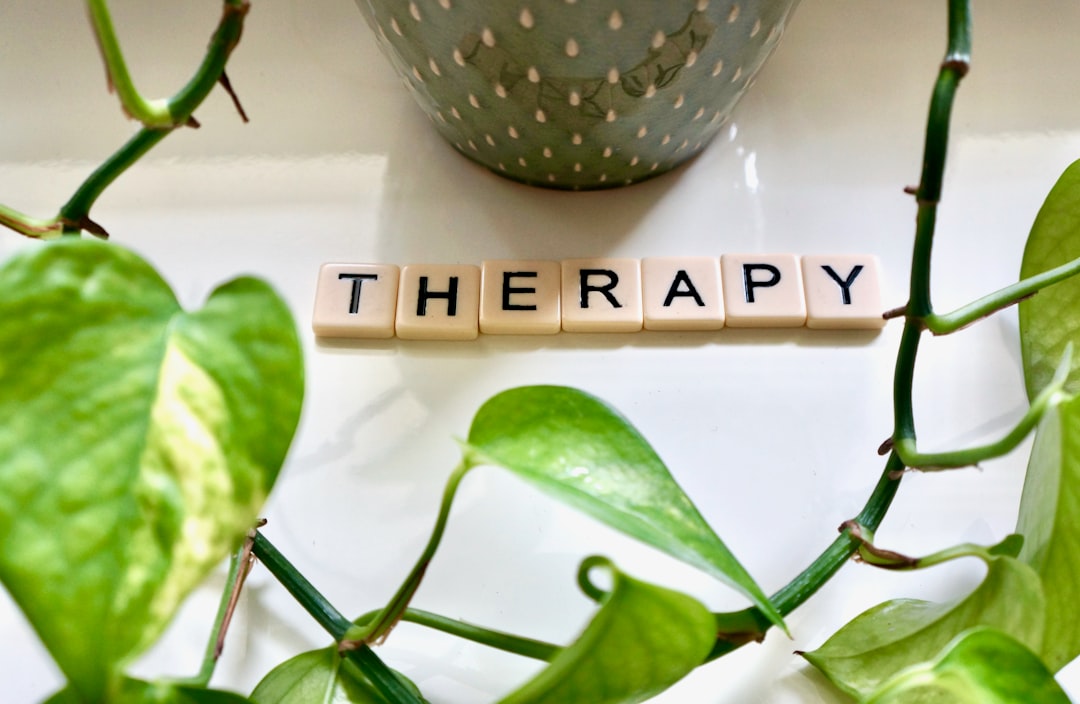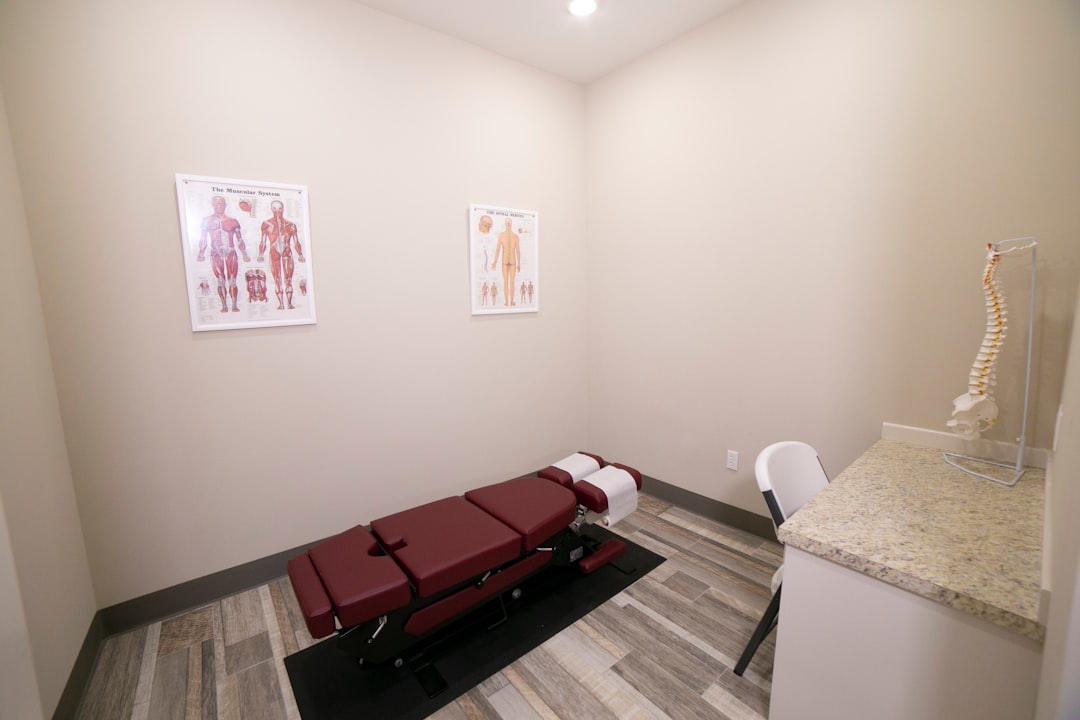

Engage prospects with a scan and streamline customer engagement with FREE QR code marketing tools by Sona – no strings attached!
Create a Free QR CodeFree consultation

No commitment

Engage prospects with a scan and streamline customer engagement with FREE QR code marketing tools by Sona – no strings attached!
Create a Free QR CodeFree consultation

No commitment
In today’s digitally driven world, QR codes have evolved from a novelty to a strategic powerhouse in bridging offline engagement with online action. For therapeutic massage clinics, QR codes represent a fun, frictionless, and surprisingly effective way to boost customer loyalty and retention without requiring an app download or complex setup. Many clinics still struggle to capture every high-value client opportunity, often missing out on those who interact in person but whose interests are never fully tracked or followed up digitally.
Integrating QR codes offers therapeutic massage clinics a direct path to enhance personalized service, simplify appointment bookings, incentivize repeat visits, and gather real-time feedback. The challenge for many clinics is bridging the offline-to-online gap, where potential leads may engage with print materials or in-clinic experiences but remain anonymous or outside the reach of ongoing communication efforts. From appointment cards to in-clinic signage, QR codes seamlessly connect the physical experience of massage therapy with digital rewards, reviews, and loyalty programs, helping to reduce friction, ensure no touchpoint goes untracked, and provide clinics with actionable insights to boost both client satisfaction and revenue growth.
This guide explores how QR codes can help therapeutic massage clinics achieve higher loyalty rates, drive engagement, and strengthen client relationships, even among those clients who might otherwise slip through the cracks. By harnessing these tools, clinics can unlock more meaningful touchpoints, reduce missed opportunities from incomplete or outdated data, and obtain detailed, real-time insights to elevate every stage of the client journey.

In the competitive wellness space, many clinics miss out on high-value prospects because their offline interactions are rarely tracked, leading to unclaimed loyalty incentives, missed feedback, and lost opportunities to follow up. QR codes serve as a vital bridge, connecting every physical touchpoint to a digital system that ensures no client interest is overlooked or left unpursued. They transform analog processes like punch cards, paper forms, and brochure takeaways into measurable, automated workflows that reinforce loyalty.
The goal is not to flood your clinic with QR codes but to place the right code at the right moment with a clear benefit for the client. When QR codes drive a single, focused action, they remove friction and create data you can act on. Used thoughtfully, they streamline operations, help staff save time at the front desk, and make clients feel seen and appreciated.
Modern platforms like Sona QR support QR creation, dynamic destination updates, and granular analytics. When connected to attribution tools like offline attribution on Sona.com, they help clinics identify hidden patterns such as which clients rebook after scanning a post-session code and surface upsell or retention opportunities at the exact moment of interest.

For many massage clinics, the inability to identify and respond to every client touchpoint means valuable prospects often remain anonymous or under-engaged. Missed rebooking signals, forgotten feedback forms, or generic marketing can stem from a lack of visibility into who actually interacts with your clinic outside the booking platform. QR codes remove that friction by letting clients take next steps immediately and by tying each action to a measurable signal you can track.
QR codes also support dynamic content flexibility and cost efficiency. If a promotion changes or a therapist’s calendar fills, you can update the QR destination instantly, which protects your investment in printed materials. This adaptability keeps offers relevant, reduces waste, and ensures clients always land on your most current booking, rewards, or education experience. Clinics then benefit from higher conversion rates and more consistent data capture across touchpoints.
In therapeutic massage settings, these benefits apply directly to appointment cards, treatment room placards, checkout receipts, brochures, and retail product labels. Each becomes a gateway to an immediate action that supports loyalty, retention, and a better client experience.

Incomplete or outdated account data is a major hurdle for many clinics attempting to personalize outreach. QR codes can help by standardizing how client information and preferences are captured across various touchpoints. The right format depends on the specific action you want clients to take and the environment in which scanning happens.
Therapeutic massage clinics benefit most from a combination of dynamic QR code formats tailored to loyalty and rebooking goals. The formats below offer the speed, convenience, and flexibility that clients expect during short in-clinic moments.
Dynamic QR codes are preferred for most clinic campaigns because they allow you to update destinations without reprinting and capture analytics that reveal performance trends. Static codes can work for evergreen vCards or a permanent Wi-Fi login, but consider the benefits of real-time editing and measurement before choosing static formats.

Many clinics struggle with incomplete visibility into where and how clients interact with their brand physically. Opportunities are lost when these interactions are not tracked or connected to contact profiles. The remedy is to place QR codes wherever clients are likely to decide, ask questions, or seek value, then prompt a single, clear action that builds the relationship.
Start by mapping the client journey from first discovery to post-session care, then add QR codes at moments where clients often hesitate or forget to follow through. Optimize the visual design to fit the environment, and test scanning under real clinic lighting and distance conditions to ensure reliability.
Consider accessibility and scannability in every placement. Use adequate size, high-contrast designs, and short URLs behind the code to reduce scan time. Include a short, benefit-led call to action such as Scan to Claim 15 Percent Off Your Next Session or Scan for Your Personalized Aftercare Plan.

Every lost opportunity to follow up with an interested client, especially those who research services yet never fill out a form, chips away at growth and loyalty. QR codes offer practical solutions that nudge clients toward repeat visits, feedback, and long-term relationships, while giving clinics the data needed to measure what works.
When planning clinic use cases, start with the outcomes you want to drive: more repeat bookings, stronger word of mouth, and better-quality feedback. Then select placements and code formats that make the desired action as effortless as possible for clients who have limited time and attention.
These use cases do not require major systems overhauls. They replace manual, low-visibility steps with measurable interactions that feed your CRM and marketing tools. Over time, your clinic builds a richer picture of what drives loyalty and can adjust strategy based on evidence rather than guesswork.
Many clinics miss upsell or cross-sell opportunities because they cannot see who engaged with which service, offer, or piece of content. With QR-enabled campaigns, every scan becomes a data signal that helps you segment audiences by intent and context. The result is more relevant messaging, fewer generic blasts, and improved conversion rates at each lifecycle stage.
Begin by deploying QR codes at multiple journey stages and tagging scans accordingly. The goal is to align each code with a clear buyer stage and action so that the resulting lists map to real client needs. From there, sync those lists to your CRM and ad platforms to power thoughtful, timely follow-ups.
With Sona QR, each code doubles as a smart entry point to your marketing engine. When paired with Sona.com, you can link QR engagement with downstream actions like website visits, email opens, and paid ad clicks, creating a cohesive profile for every client and prospect.
A frequent challenge for clinics is not knowing which campaigns or channels truly move the needle because data lives in silos. QR codes help unify the picture by making every physical asset and event measurable. When integrated across channels, they attribute results to the right source and reduce wasted spend.
QR codes are not just links, they are connectors that convert offline interest into digital action. Place them wherever you already meet your audience, then track performance to learn which combinations of media drive rebooking, reviews, and revenue.
Centralizing QR management and analytics in a platform like Sona QR ensures consistent branding, accurate performance reporting, and easy syncing to your CRM. This creates a continuous feedback loop in which every channel informs the others.
Operational frustrations like missed follow-ups, unclaimed loyalty rewards, or slow feedback collection usually trace back to ad hoc processes. A structured checklist ensures each QR campaign has a clear purpose, strong creative, and reliable measurement. Treat QR deployments like mini campaigns, each with a defined outcome and learning objective.
Use the steps below to build repeatable processes that scale. Adapt examples to the realities of a therapeutic massage clinic, such as short dwell times at the counter, privacy considerations in treatment rooms, and seasonal demand fluctuations.
Close the loop by reviewing results weekly or monthly, then capturing the best-performing combinations of placement, message, and audience segment in a simple playbook. Over time, your clinic builds a library of proven QR recipes for common goals.
Lack of visibility into engagement is a persistent headache for massage clinics, leading to missed targeting opportunities and an inability to connect marketing spend with business outcomes. Effective QR programs link every scan to downstream actions such as bookings, membership upgrades, and retail purchases, so you can prove impact and adjust spend with confidence.
For therapeutic massage clinics, tracking should move beyond simple scan counts. You want to attribute scans to channels, understand conversion quality, and see which audiences respond best. The more granular the data, the faster you can iterate.
Sona QR centralizes code creation and analytics while Sona.com expands insight into pipeline and revenue influence. Together, they help unify fragmented touchpoints so you can see progression from a first scan to purchase readiness and long-term loyalty.
Ongoing challenges like generic campaign performance, limited A/B testing for offline assets, and weak post-session engagement can stall growth. The following practices help clinics unlock higher scan rates and stronger ROI while reducing staff workload and data gaps.
Creative example: Print loyalty cards with a unique QR that lets clients check in digitally at arrival and view reward progress in real time. Another example: Place a QR on foam rollers or stretching tools sold at the clinic that opens a tailored aftercare routine, then retarget those scanners with package offers for sports recovery or posture-focused sessions.
In a landscape where missed opportunities stem from invisible interactions and fragmented data, QR codes stand out as a practical way to surface engagement signals, personalize retargeting, and create growth loops for therapeutic massage clinics. Scanned touchpoints become the foundation for smarter follow-ups, deeper relationships, and more predictable revenue. With thoughtful implementation, each code converts curiosity into action and each action into valuable insight.
Therapeutic massage clinics that harness QR codes effectively move beyond simple transactions to deliver a connected, data-informed loyalty experience. By tackling root causes of missed opportunities such as untracked touchpoints, anonymous traffic, and incomplete data, QR programs help clinics personalize outreach, streamline operations, and capture more lifetime value from every client. From seamless rebooking and review generation to upsell potential and membership growth, QR codes bridge offline excellence with online efficiency.
If you are ready to explore this strategy, start simple: choose one key moment like post-session rebooking, deploy a dynamic QR with a clear benefit, and measure the outcome. Platforms like Sona QR make it easy to create and manage codes, while Sona.com connects scans to revenue so you can see what truly drives growth. Start creating QR codes for free.
The best therapeutic massage clinics don’t just provide exceptional care—they build lasting relationships. QR codes empower these clinics to reward loyalty, attract new clients, and enhance the overall customer experience with ease. Instead of guessing which loyalty initiatives work, you’ll know exactly who engages, when, and how often they return.
Sona QR makes it effortless to create dynamic, trackable QR codes that update instantly without reprinting. This means you can tailor rewards programs in real time, connect every scan to client retention metrics, and turn each interaction into a meaningful touchpoint that drives repeat visits and revenue growth.
Start for free with Sona QR today and transform every scan into a loyal client, a glowing review, or your clinic’s next success story.
QR codes help therapeutic massage clinics boost customer loyalty, simplify appointment bookings, incentivize repeat visits, gather real-time feedback, and provide actionable insights to improve client satisfaction and revenue.
Clinics should strategically place QR codes at high-impact touchpoints such as appointment cards, receipts, in-clinic signage, brochures, and product packaging with clear calls to action that match client intent and reduce friction.
Common QR code formats include dynamic web links for booking and loyalty enrollment, vCards for contact sharing, SMS or email prefill for feedback and review requests, Wi-Fi access codes, and app download links when relevant.
Clinics track scan volume, scan-to-action conversion rates, time to rebook, referral volume, and feedback completion, while connecting scan data to CRM systems to measure outcomes like bookings, reviews, and revenue attribution.
Clinics should clarify their business goal, select dynamic QR codes for flexibility, design and test codes with clear branding and CTAs, deploy codes across relevant channels, train staff to promote scanning benefits, and monitor and optimize campaign performance.
QR codes enable clients to take immediate digital actions from physical touchpoints without app downloads, capturing valuable data that tracks client interest, enables follow-ups, and personalizes outreach.
Key use cases include loyalty program enrollment, post-treatment feedback and reviews, special offer redemption, express rebooking, and therapist introductions to strengthen client relationships and retention.
By deploying unique QR codes at different buyer journey stages, tagging scan behavior by intent, segmenting by location and timing, and syncing data to CRM and ad platforms, clinics can deliver personalized follow-ups and improve conversion rates.
Use unique codes per asset and location, add UTM parameters for accurate tracking, automate follow-up messages triggered by scans, and train staff to communicate the immediate benefits of scanning to clients.
QR codes allow clinics to update digital destinations instantly without reprinting materials, keep offers relevant, reduce waste, and multiply the value of physical assets by making them actionable and trackable.
Use Sona QR's trackable codes to improve customer acquisition and engagement today.
Create Your FREE Trackable QR Code in SecondsJoin results-focused teams combining Sona Platform automation with advanced Google Ads strategies to scale lead generation

Connect your existing CRM

Free Account Enrichment

No setup fees
No commitment required

Free consultation

Get a custom Google Ads roadmap for your business






Launch campaigns that generate qualified leads in 30 days or less.
